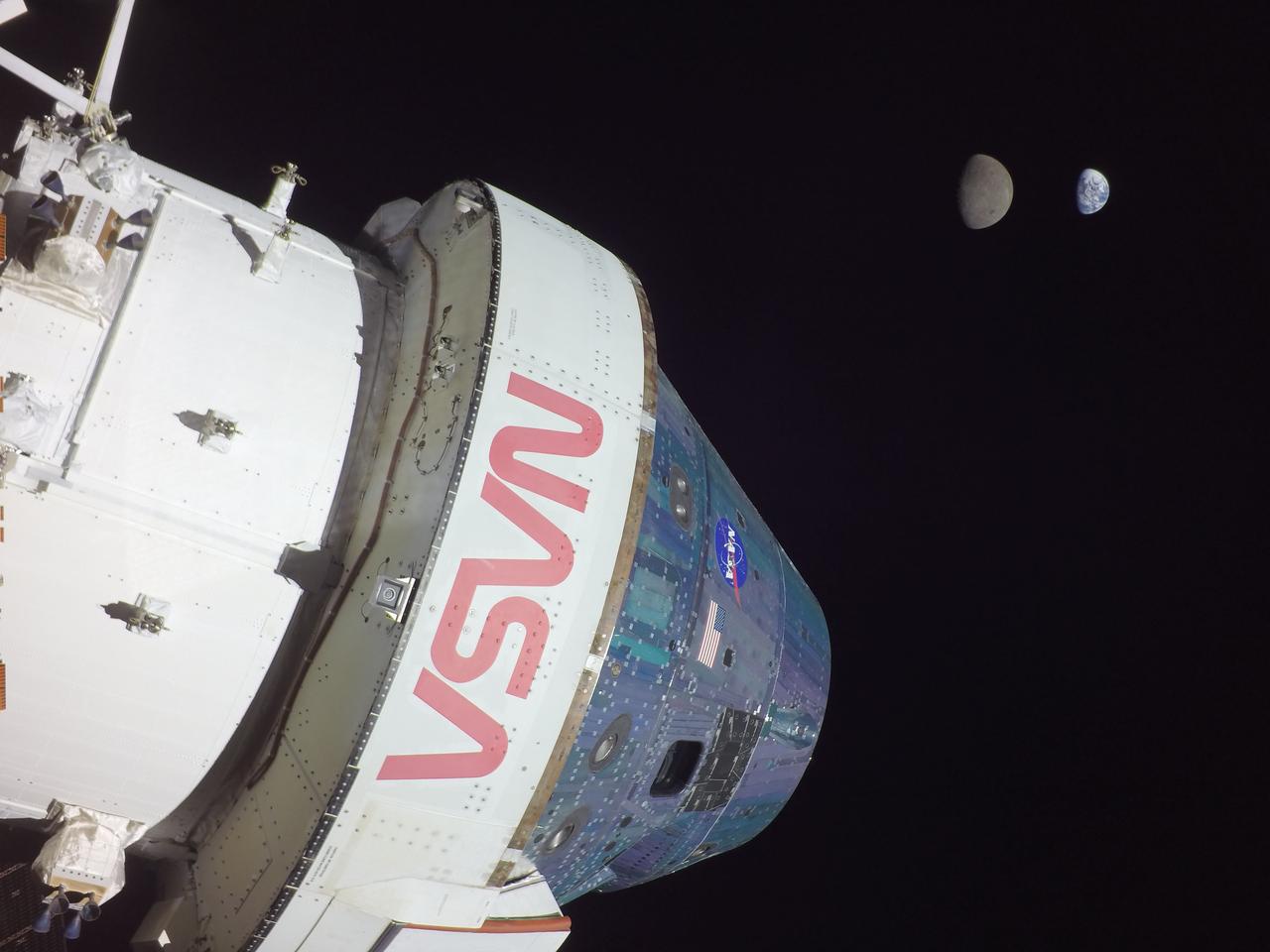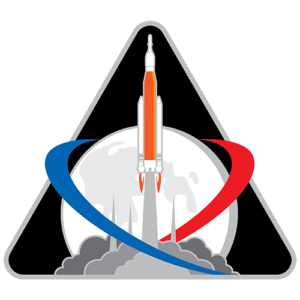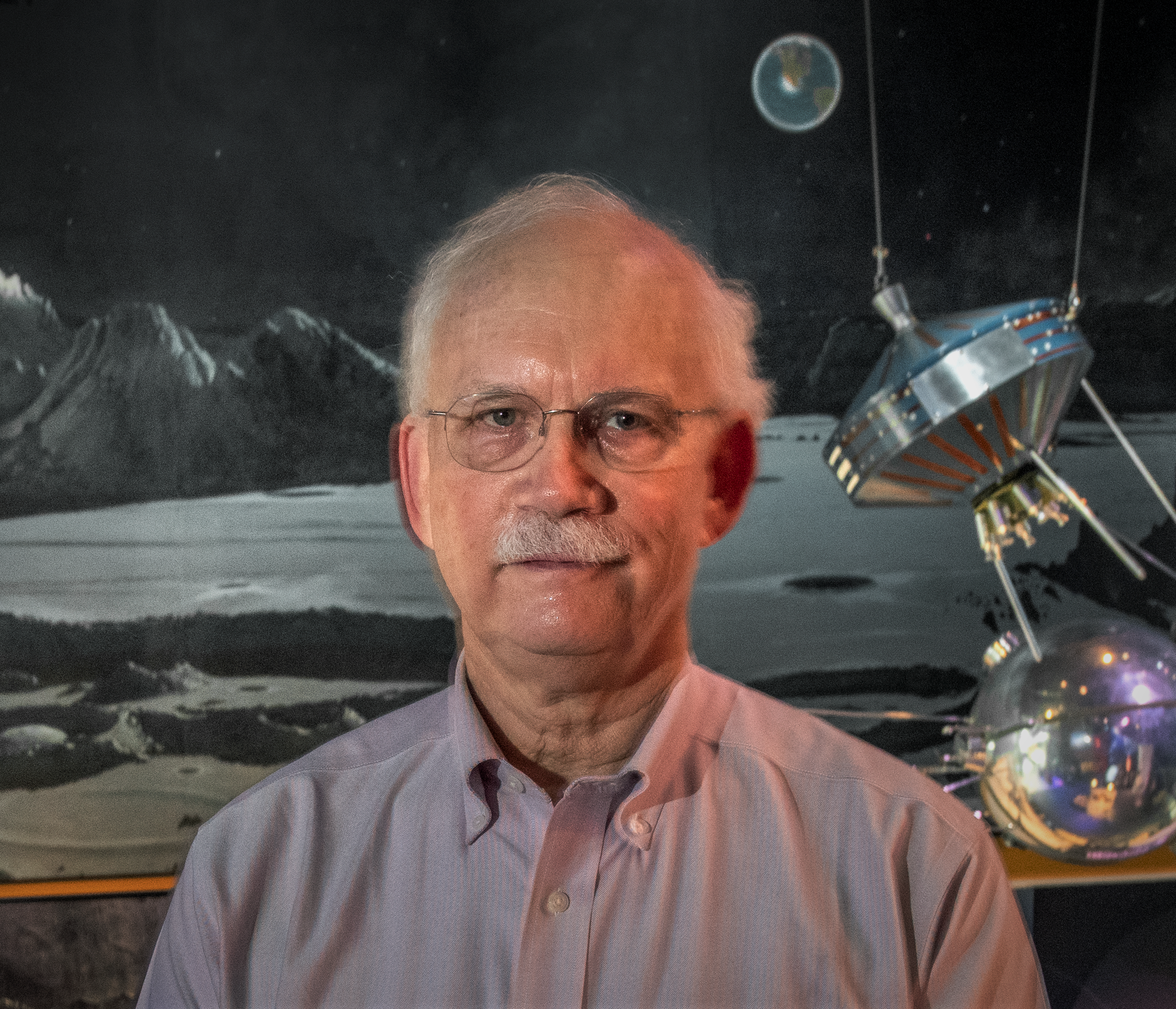The Presidents' Lecture
Back to the Moon to Stay?
The Artemis Program and the Past and Future of Human Lunar Exploration
Michael J. Neufeld
Senior Curator (Retired)
National Air and Space Museum
Smithsonian Institution
Sponsored by MWZB IP Law Firm
About the Lecture

NASA’s April 2023 announcement of the Artemis II crew, the first humans scheduled to go to the Moon in over half a century, is a sign that the United States and its international partners are serious about conducting a program of human lunar exploration. This is new. Two Presidents, both named Bush, gave major speeches announcing that astronauts would be going back to the Moon and on to Mars. But no lasting program emerged from either announcement. And humans have never been more than 400 miles from the Earth since the Apollo 17 astronauts splashed down in December 1972.
Why did the two Bush announcements fail and why is Artemis likely to succeed in landing humans on the Moon again, even establish a permanent base? And why is Artemis not like Apollo, which ended only four years after the first human lunar expedition? To answer these questions this lecture will discuss the evolution of US human spaceflight policy since the first Bush Administration and why the current NASA program has escaped the fate of the 1989 and 2004 initiatives.
The lecture will discuss the speaker’s conclusion that NASA’s Artemis Program is sustainable, despite a lack of public enthusiasm, because human spaceflight has strong congressional support and signals great power status. The end of the Shuttle program and the completion of the International Space Station opened room in the NASA budget for a new program. Moreover, conflicts over how to sustain the ISS have led to a program that combines government and commercial approaches to human spaceflight. These factors are reinforced by the international cooperative dimensions of Artemis and by Chinese claims that it too will establish a lunar base. Artemis seems likely to continue until at least the 2030s, if for no other reason than that the United States needs a major human spaceflight program to look like a superpower and to compete with China.
Selected Reading & Media References
“Back to the Moon … to stay?” Physics Today 76, no. 12 (December 2023), 40-48. https://pubs.aip.org/physicstoday/article/76/12/40/2923593

About the Speaker

Michael J. Neufeld was a Senior Curator in the Space History Department of the Smithsonian’s National Air and Space Museum, until he retired in 2023. He is an historian and has written widely on the development of rocketry, the German and American Space programs, and various aspects of the history and holdings of the National Air and Space Museum.
Michael is an author of more than a hundred scholarly and popular articles, and he is the author of four books: The Skilled Metalworkers of Nuremberg (1989), The Rocket and the Reich (1995), Von Braun (2007) and Spaceflight (2018). He is also an editor of five additional books: Planet Dora, The Bombing of Auschwitz, Smithsonian National Air and Space Museum, Spacefarers, and Milestones of Space.
Among other honors and awards, Smithsonian Secretary David Skorton gave him the Smithsonian Distinguished Scholar Award, the highest research award of the Institution. And Asteroid 329018 Neufeld is named for him.
Michael earned a BA in History at the University of Calgary, an MA in History at the University of British Columbia, and an MA and PhD in History at Johns Hopkins University.
Minutes
On January 12th, 2024, in the Powell Auditorium of the Cosmos Club in Washington, D.C., President Larry Millstein called the 2,488th meeting of the Society to order at 8:02 p.m. ET. He began by welcoming attendees, thanking sponsors for their support and announcing new members. Scott Mathews then read the minutes of the previous meeting including the lecture by Kathryn Huff on “Nuclear Energy & Advanced Reactor Designs”. The minutes were approved as read.
President Millstein then introduced the speaker for the evening, Michael Neufeld, Senior Curator (Retired) of the National Air and Space Museum. His lecture was titled, “Back to the Moon to Stay?”
The speaker began by stating that he was an avid space enthusiast and historian, and that he believed that the Artemis space program was likely to survive into the 2030s, due to geopolitical and domestic political reasons. Neufeld then delved into the historical and political context of the US space program post-Apollo. He highlighted the collapse of public support for deep space exploration in the early 1970s.
The speaker discussed the development of the Space Shuttle program in the early 1970s, with the approval of Richard Nixon based on both economic and political considerations. Neufeld indicated that while the Space Shuttle program dominated the 1980s, its limitations became apparent with failed expectations of high flight rates and the Challenger accident in 1986. Despite the setbacks, Ronald Regan approved the Space Station in 1983. The speaker introduced the “von Braun paradigm”, a fixed path toward deep space exploration which included the steps: space station, moon, Mars, and beyond.
Neufeld discussed the fact that while George H.W. Bush had considerable enthusiasm for space flight, the cost estimates for a moon-Mars program he initially supported exceeded a half a trillion dollars, and the lack of smaller, more affordable options led to the end of his space exploration initiative. The speaker then discussed the Hubble Telescope problem and the space shuttle Columbia disaster, and how these events further degraded the public image of NASA, and eroded public support for space exploration. Neufeld said that at the end of 2011, with the retirement of the space shuttle, the US was left without “heavy lift” capability.
The speaker then discussed the Obama administration and the origins of the Artemis program. He indicated that this program aims to return humans to the lunar surface, but with a “more sustainable and long-term plan”. Artemis includes the development of the Space Launch System (or SLS), the Orion rocket, and ultimately, a space station in lunar orbit called Gateway. Neufeld commented that while the Artemis program continued under the Trump and Biden administrations, the timeline has been fluid, with several initial deadlines already missed.
Neufeld briefly discussed missions to asteroids and comets, including DART, Deep Impact, OSIRIS, and Hyabusa 2. The speaker then turned to more recent developments in space exploration, particularly the accomplishments of the private sector. He discussed the Starship, built by Space-X, and Blue Moon, built by Blue Origin. He said that NASA is continuing to develop a commercial model for certain components and vehicles, where a private company owns the equipment and charges NASA for its use.
Neufeld ended his lecture by noting the combination of domestic political support, international collaboration, and the geopolitical competition with China as driving forces behind the Artemis program. He reiterated his belief that Artemis is likely to survive, well into the 2030s.
The lecture was followed by a Question and Answer session.
One member asked about placing a space station at the “LaGrange” point as opposed to low Earth orbit. Neufeld briefly described the “L-points” as places where the gravitational pull of two objects cancel one another, but said that none of the proposed space stations would be located at a LaGrange point. He mentioned that the Chinese space agency put a communications satellite at the Earth-Moon L2 point, to communicate with a lander on the far side of the moon.
A member asked about the possibility of financial instability with private companies jeopardizing upcoming missions, specifically citing some of Elon Musk’s recent acquisitions. Neufeld responded that Space-X appears to be “remarkably stable, because they are making so much money”. However, he agreed that there is legitimate risk associated with betting on commercial companies.
Another member asked about the use of the words “to stay?”, asking Neufeld to define what it means “to stay”. Neufeld commented that he included the question mark in the title because he is not really sure what it means to stay. He said “Prediction is a risky business, especially for a historian.” He indicated that his current vision of what it would mean to stay, would be to have a Gateway space station in lunar orbit, a base on the south pole of the moon, and the ground-based infrastructure to support them.
A member asked for more specifics about the Gateway space station, including the timeline for its launch and deployment. Neufeld said that the first two elements of Gateway were scheduled to launch on a Falcon Heavy in late 2025, but he admitted that he got this information from Wikipedia. He said that there were no plans to use Gateway until 2028 or later.
A question from the web asked what the current amount of private funding for space exploration was, as a percentage of the Federal budget. Neufeld responded that he did not know the specific number, but that it was an extremely small fraction. He mentioned that a significant amount of private funding was going to the development of launch vehicles for communications satellites, rather than space exploration.
The Q&A session concluded with a question, asking Neufeld to speculate about fictional events that might have dramatically altered the history of the US space program. Neufeld commented that had the Soviet Union landed a man on the moon, it is likely that the US would have responded with increased efforts to maintain our technological superiority in the decades following Apollo.
After the question and answer period, President Millstein thanked the speaker and presented him with a PSW rosette, a signed copy of the announcement of his talk, and a signed copy of Volume 1 of the PSW Bulletin. He then announced speakers of up-coming lectures, made a number of housekeeping announcements, and invited guests to join the Society. He adjourned the 2488th meeting of the society at 10:09 pm ET.
Temperature in Washington, DC: 11.1° Celsius
Weather: Light Rain
Audience in the Powell auditorium: 68
Viewers on live stream: 48 …for a total of 116 live viewers
Views of the video in the first two weeks: 574
Respectfully submitted, Scott Mathews: Recording Secretary